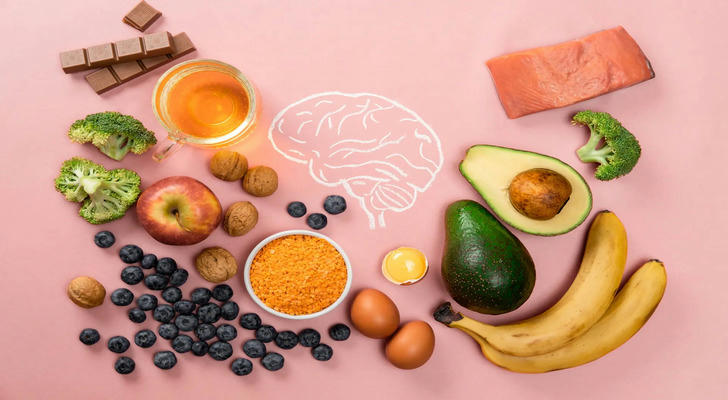12 Foods to Help Manage High Blood Sugar Naturally

Maintaining healthy blood sugar levels is essential for overall well-being, especially for individuals with diabetes or prediabetes. One of the most effective ways to manage high blood sugar is through a balanced diet rich in fiber, protein, and healthy fats 🥗. Regularly monitoring your levels with a blood glucose meter can also help track progress and make informed dietary choices 📊. In this article, we’ll explore 12 scientifically backed foods that can help stabilize blood sugar levels and support metabolic health!
1. Leafy Greens (Spinach, Kale) 🥬
Leafy greens are low in digestible carbs and high in fiber, making them ideal for managing high blood sugar. A 2020 study found that consuming leafy greens can improve insulin sensitivity and reduce fasting glucose levels Example: Maria, who tracks her levels with a blood glucose meter, includes a spinach salad in her lunch to avoid midday sugar spikes.
2. Berries (Blueberries, Strawberries) 🍓
Berries are rich in antioxidants and fiber, which slow glucose absorption. Research shows that berries can lower post-meal blood sugar spikes by up to 36% . Example: John enjoys a handful of blueberries with yogurt to satisfy his sweet cravings without raising his high blood sugar.
3. Nuts (Almonds, Walnuts) 🌰
Nuts are packed with healthy fats and magnesium, which improve insulin function. A 2021 study confirmed that daily nut consumption reduces fasting glucose levels . Example: Priya snacks on almonds instead of chips and checks her blood glucose meter to confirm stable readings.
4. Whole Grains (Oats, Quinoa) 🌾
Unlike refined grains, whole grains release glucose slowly. A 2019 study found that oats can reduce HbA1c levels by 0.5% in people with diabetes . Example: David starts his day with oatmeal and uses his blood glucose meter to track improvements over time.
5. Greek Yogurt (Unsweetened) 🥄
High in protein and probiotics, Greek yogurt helps regulate blood sugar. A 2022 study linked probiotic yogurt to reduced insulin resistance . Example: Ana eats plain Greek yogurt with cinnamon to avoid high blood sugar spikes after breakfast.
6. Avocados 🥑
Rich in monounsaturated fats, avocados improve glycemic control. Research shows they can lower post-meal glucose by up to 40% . Example: Tom adds avocado to his meals and verifies stable readings on his blood glucose meter.
7. Cinnamon ☕
Cinnamon enhances insulin sensitivity. A 2020 meta-analysis found it can reduce fasting glucose by 24 mg/dL . Example: Lena sprinkles cinnamon in her coffee to help manage her high blood sugar.
8. Fatty Fish (Salmon, Mackerel) 🐟
Omega-3s in fatty fish reduce inflammation and improve glucose metabolism. A 2021 study confirmed their benefits for diabetes management. Example: Raj includes salmon twice a week and monitors his blood glucose meter for consistent results.
9. Chia Seeds 🌱
High in fiber, chia seeds slow carbohydrate absorption. Research shows they can lower post-meal glucose by 39%. Example: Sofia blends chia seeds into smoothies to prevent high blood sugar spikes.
10. Apple Cider Vinegar 🍎
ACV improves insulin sensitivity and lowers fasting glucose. A 2018 study found it reduces post-meal glucose by 20% . Example: Carlos drinks diluted ACV before meals and checks his blood glucose meter for improvements.
11. Legumes (Lentils, Chickpeas) 🥘
Legumes are high in fiber and protein, stabilizing blood sugar. A 2022 study linked them to reduced HbA1c levels . Example: Nina swaps rice for lentils and tracks changes with her blood glucose meter.
12. Garlic 🧄
Garlic contains compounds that enhance insulin secretion. Research shows it can lower fasting glucose by 10%. Example: Ethan cooks with garlic daily to help manage his high blood sugar.
Conclusion
Incorporating these 12 foods into your diet can help regulate high blood sugar naturally. Pairing dietary changes with regular monitoring using a blood glucose meter ensures better control over metabolic health. Always consult a healthcare provider before making significant dietary adjustments. Which food will you try first? 🌟
The Role of a Blood Glucose Meter in Managing High Blood Sugar
Monitoring blood sugar levels is a crucial part of diabetes management, and a blood glucose meter is one of the most effective tools for tracking daily fluctuations. Whether you have diabetes, prediabetes, or simply want to maintain healthy glucose levels, using a blood glucose meter can provide real-time insights into how food, exercise, and lifestyle choices affect your body.
Why Regular Monitoring Matters
●Helps identify patterns in high blood sugar spikes after meals.
●Allows for timely adjustments in diet, medication, or activity levels.
●Reduces the risk of long-term complications like nerve damage or heart disease.
How to Use a Blood Glucose Meter Effectively
1.Test at Key Times– Measure fasting glucose (morning), before meals, 2 hours after eating, and before bed.
2.Keep a Log – Record readings alongside meals and activities to identify trends.
●Example: "After switching to whole grains, Mark noticed his post-meal readings on his blood glucose meter dropped by 20 mg/dL."
3.Compare with Lab Tests – Ensure your meter’s accuracy by cross-checking with A1C tests.
Choosing the Right Meter
●Accuracy: Look for FDA-approved models with a low margin of error.
●Ease of Use: Some meters sync with smartphone apps for better tracking.
●Cost & Availability: Test strips should be affordable and accessible.
